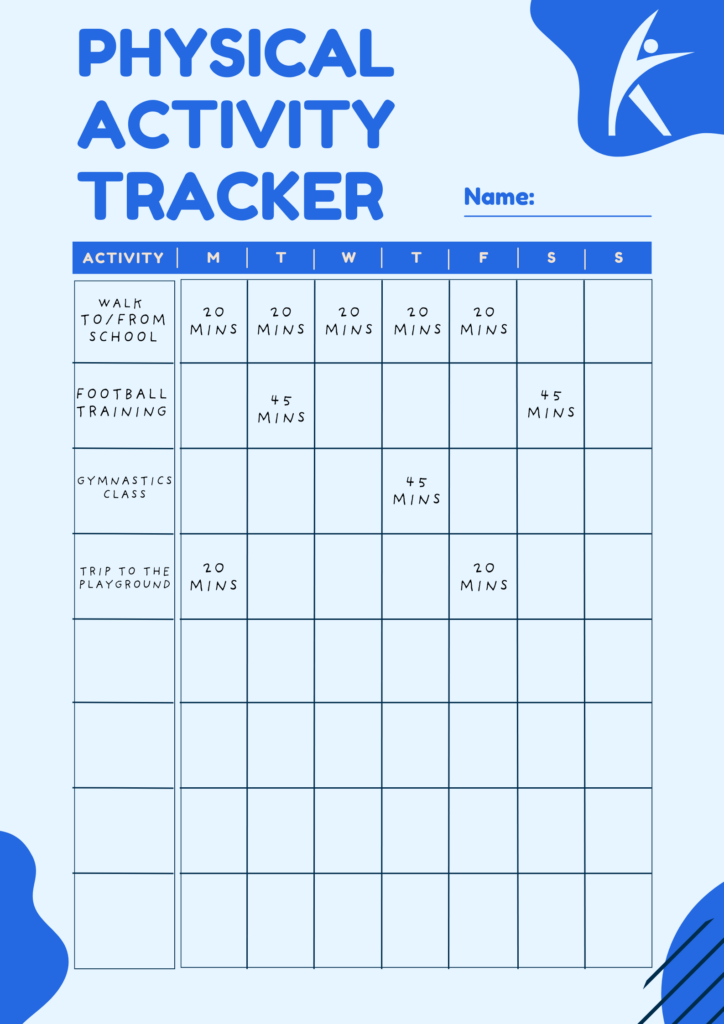By Sam Wheeldon
It’s no secret that kids today are moving less than they used to, something that’s causing real concern when it comes to their overall motor development (Coach Laura dives into this in her latest article!). According to the Active Start guidelines from the National Association for Sport and Physical Education (NASPE), helping young children develop movement skills should be a key focus in early education (Goodway et al., 2009).
Fundamental Movement Skills (FMS) are the building blocks for confident, capable, and motivated movers. But the reality is, many kids in primary school right through to secondary school, aren’t mastering these skills as they should. Without a solid foundation in movement, it’s harder for them to pick up more complex skills, enjoy sports, and even develop socially and cognitively (V. Gregory Payne & Isaacs, 1987). Simply put, if we want kids to stay active for life, we need to make sure they’re getting the right start!
Kids naturally develop their FMS by playing different sports and being active. In fact, many experts, including sports leaders and paediatricians recommend that children try multiple sports until at least early adolescence rather than specialising too soon. This helps them build skills across all three key FMS categories.
But in Ireland, there’s a strong focus on sports that involve object control skills, especially for kids. The Children’s Sport Participation and Physical Activity (CSPPA) study in 2022 found that four out of the five most popular sports for primary school boys were ball sports. Girls took part in a slightly wider variety of activities, but overall, there’s still a big emphasis on ball games (CSPPA Report, 2022). (Check out Tables 1.1 & 1.2 below for the breakdown!).
| Boys’ Sports Participation Rates | |||
| Primary | Secondary | ||
| Sport | % | Sport | % |
| Soccer | 56 | Soccer | 41 |
| Gaelic Football | 47 | Gaelic Football | 38 |
| Hurling | 37 | Hurling | 26 |
| Swimming | 36 | Swimming | 26 |
| Rugby | 25 | Weight Training | 25 |
| Girls’ Sports Participation Rates | |||
| Primary | Secondary | ||
| Sport | % | Sport | % |
| Swimming | 45 | Swimming | 34 |
| Gaelic Football | 43 | Gaelic Football | 33 |
| Camogie | 40 | Dance | 25 |
| Dance | 32 | Camogie | 22 |
| Athletics | 29 | Cycling | 20 |
While ball sports help kids develop important motor skills, they don’t cover all the FMS kids need. Even children who excel in one area of movement may still struggle with others. Plus, not every child is drawn to mainstream sports, so it’s important to offer alternative ways for them to build these essential skills while having fun.
One often-overlooked activity with incredible benefits for both physical and mental development is martial arts. A review of multiple studies found that martial arts training improves cardiorespiratory fitness, speed, agility, strength, flexibility, coordination, and balance in children (Stamenković et al., 2022). One study even showed that five year olds who practiced karate for a year had twice the physical fitness growth rate compared to those in regular PE classes (Pavlova, Bodnar & Vitos, 2018). Martial arts training introduces a well-rounded mix of movement patterns, including locomotion, balance, and even object control. And for kids already involved in other sports, it can be a great supplemental activity thanks to its high potential for skill transfer, meaning the skills learned in martial arts can carry over to other sports. For example, a basketball player who develops explosive jumping power for dunking might find high jump in athletics comes naturally. Or a wrestler skilled in takedowns could have an instinctive understanding of rugby tackling without much extra training. With its diverse techniques and movement patterns, martial arts offer a wide range of skills that can benefit athletes across different sports.
One martial art in particular (taught by several School Fitness Ireland coaches!) stands out for its exceptional potential to enhance overall movement skills: Karate. With its mix of dynamic footwork, coordination, strength, and discipline, karate not only helps kids master FMS but also builds a foundation that can support success in a variety of other sports.
Karate isn’t just about kicks and punches; it’s an incredibly well rounded activity that strengthens balance, coordination, flexibility, and overall physical literacy. Plus, the skills learned in karate transfer to other sports, making it a great foundation for young athletes. Whether it’s improving agility for football, explosiveness for sprinting, or focus for academics, karate has something for everyone. Let’s break down how karate training builds physical skills that carry over into other sports and activities.
Karate training starts from the ground up, and stances are key. Holding deep, controlled positions strengthens the legs, improves balance, and enhances stability; fundamental for many sports.
Take Zenkutsu-dachi (forward leaning stance). This position increases ankle flexibility (dorsiflexion), which research links to improved vertical jump performance, a huge plus for basketball and volleyball players (Panoutsakopoulos & Bassa, 2023). Strong, stable ankles also help prevent injuries, something crucial for high-impact sports.
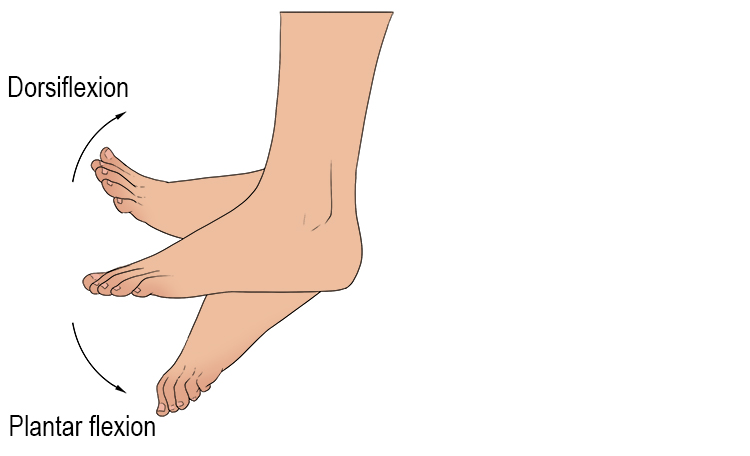
Karate kicks develop dynamic flexibility, explosive strength and coordination, all essential for different sports.
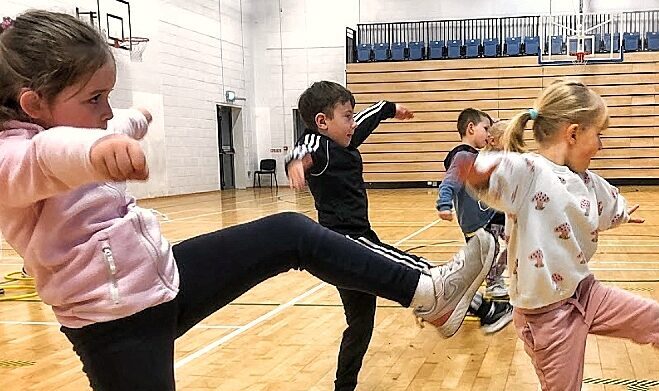
Karate includes two main types of training:
The movement involved in Kumite training builds agility, rhythm, and reaction time which are critical for sports like dance and football. It also mirrors the quick lateral movements needed by soccer goalkeepers and table tennis players, who must stay on their toes and react instantly to the ball.
While karate isn’t primarily a grappling martial art like Judo or Jiu-Jitsu, it still includes throws and takedowns that can be extremely beneficial for contact sports.
One example is Morote Gari, a lesser known karate throw that closely resembles the double leg takedown in wrestling. This technique mimics rugby tackles, making karate a great cross training option for players looking to improve their tackling ability and body control in Gaelic football and rugby.
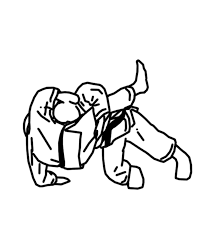
Karate isn’t just about strong punches, it’s also a great way to build upper body strength! One key technique behind this is Hikite, the act of pulling one arm back while the other strikes, blocks, or locks. This movement isn’t just for show; it generates powerful rotational force and heavily engages muscles like the lats and traps, helping to build strength and stability.
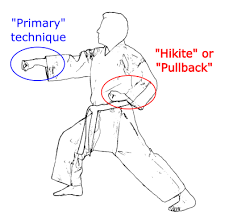
Along with classic bodyweight exercises like push-ups and sit-ups, Hikite plays a big role in karate’s ability to develop upper-body power. Plus, this pulling motion has crossover benefits for other sports, think throwing in cricket and handball, overhead serves in tennis and volleyball, and even swimming strokes like the front crawl!
Karate often incorporates training tools like tennis balls, bean bags, foam noodles, and even blunt weapons. These exercises aren’t just fun, they build hand eye coordination, proprioception, and spatial awareness. This is especially valuable for kids who may not engage in traditional ball sports but still need to develop object control skills.
Martial arts are more than just a great physical workout, they improve mental and cognitive skills that benefit both sports and academics.
Cognitive benefits include:
Kata, the set sequences of movements practiced in karate, are more than just a way to earn new belts, they’re a powerful tool for developing focus, memory, and discipline. These routines can range from 20 moves for beginners to over 50 at black belt level, requiring kids to learn, practice, and perfect them over time.
Research has shown that practicing kata can significantly improve concentration and attention in school-aged children. It’s also been linked to faster reaction times, better working memory, and even increased blood flow to the brain, all of which can support learning. Plus, studies suggest it helps reduce aggression, social difficulties, and symptoms of oppositional defiance disorder (which includes frequent anger, irritability, and arguing) (Bhattacharya, Chatterjee & Mondal, 2022; Farzaneh Parsamajd & Saeid Teymori, 2024).
Given all these benefits, it’s not surprising that kids who practice martial arts tend to score higher academically than those who don’t play sports, or even those involved in team sports (Giordano, Gómez-López & Alesi, 2021). Karate isn’t just great for physical skills, it’s a serious brain booster too!
At School Fitness Ireland, we believe there’s a sport for every child, and we’re here to help schools introduce new activities that can engage all students. Karate is a fun, non competitive way to build confidence, develop movement skills, and support physical and cognitive growth. If you’re looking for something different to bring to your school, why not give martial arts a go? Your students might just find their new favourite sport! Click here to book!
Fundamental movement skills (FMS) are the basic movements that involve the trunk, legs, arms, hands, and feet, serving as the foundation for more complex movement patterns. These skills are typically categorised into three main groups: locomotor skills, body control skills, and object control skills.
| Locomotor Skills | Body Control Skills | Object Control Skills |
| - Walking - Running - Jumping - Hopping - Skipping - Leaping - Crawling - Climbing - Dodging | - Balancing on 1 foot - Walking along a line - Rolling - Twisting - Turning - Landing - Stopping - Bending - Stretching | - Throwing - Catching - Striking - Kicking - Dribbling |
The proper development of these skills in childhood is vital for a child’s physical, cognitive, and social development. It lays the foundation for an active lifestyle and is linked to higher physical activity levels in later years. Research indicates that children should master all fundamental movement skills by the age of 8, but recent studies reveal that a significant number of Irish children have not achieved this milestone by the age of 10.
The Moving Well Being Well project (2020) assessed the proficiency of several fundamental movement skills among over 2,000 Irish primary school students. The findings showed a lack of proficiency across all components, with only 60% of students achieving mastery in balance and just over half mastering locomotor and object control skills. There were also notable gender differences, with boys excelling in object control skills like throwing and catching, while girls performed better in body control skills such as balance and skipping. These disparities are attributed to the different sports and activities typically undertaken by boys and girls, with girls more likely to engage in gymnastics and dance, and boys in sports like rugby and football.
Failure to develop these fundamental movement skills can have long-term physical and mental health implications. Children who lack confidence in their movements are less likely to engage in physical activity, potentially leading to isolation, anxiety, and low self-esteem. Therefore, it is critical to help children acquire these skills at an early age to equip them for an active lifestyle throughout their lives.
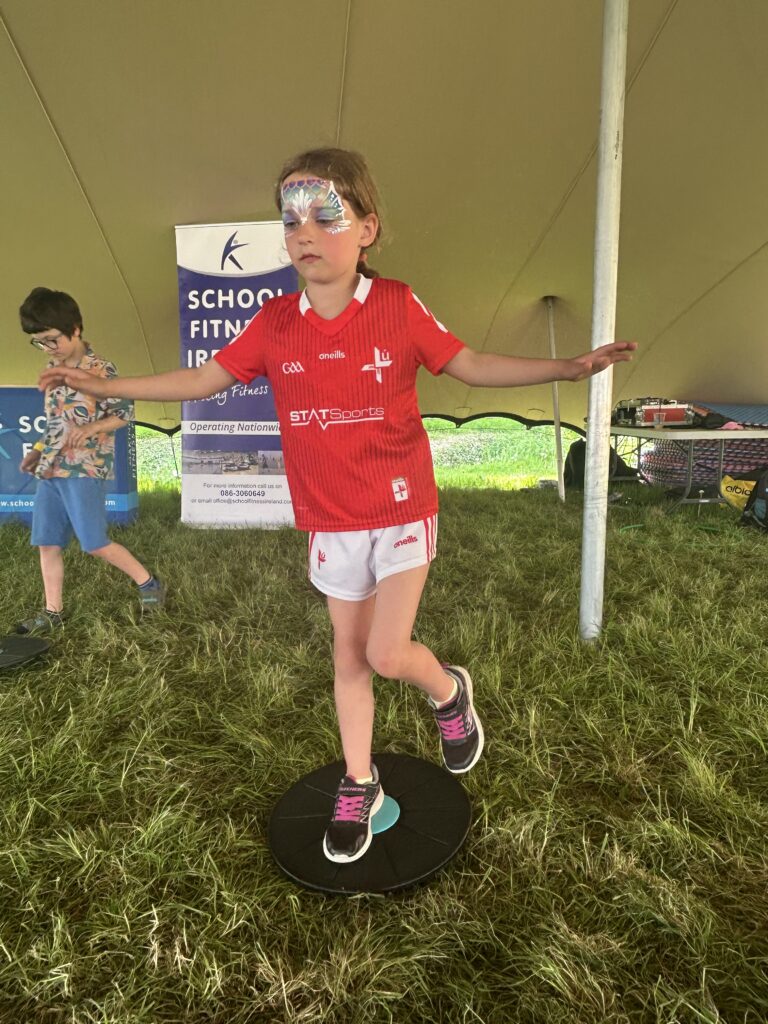
To help children master fundamental movement skills, they need ample opportunities to move their bodies. Here are some simple and engaging exercises that can be incorporated into daily activities.
| Fundamental Movement Skill | Exercise |
| Running | - Backwards and forwards - Running on the spot, focusing on arm and leg movement - Along different paths - circle, zig zags etc. - At different speeds - try fast and slow music - On different surfaces - grass, gravel, sand - Sprints - Animal runs - run like a cheetah, an elephant, a mouse - Obstacle course |
| Skipping | - Step hop practice - Skipping as tall and as small as you can - Skipping a fast and as slow as you can - How many skips does it take to get from “here” to “there” - Without touching the cracks on the ground |
| Jumping | - Forwards, backwards and side to side - Frog jumps - Lily pad jumps - Continuous standing broad jumps - Jump with overhead clap - Hurdle jumps - Jumps from a safe height e.g a bench, the bottom step - Hopscotch - Jumping in puddles |
| Balancing | - Stand on one leg (left and right) - Walk along balance beam/ narrow line - Walk with a beanbag on top of their head - Standing on one leg, pick something up off the floor - Balancing with movement - squats, toe raises, side leg lifts etc. - Balance on one leg with eyes closed - Partner balance - create shapes while holding hands with your partner |
| Rolling | - Egg rolls - hold knees to chest and tuck chin to chest and start rolling backwards and forwards or side to side - Pencil rolls - moving sideways and on the spot - Forward rolls |
| Throwing | - Roll a ball along the floor, run ahead and pick it up - Hold a ball in 2 hands, drop it and catch it with 2 hands - Underhand toss to a partner or bucket - Overhand throw to a partner or bucket - Throwing for distance - Throwing for accuracy |
| Catching | - Self toss and catch - with both hands then one hand - Partner toss and catch - on the spot and while walking/running - Bounce a catch - Balloon catch - Catch different size balls |
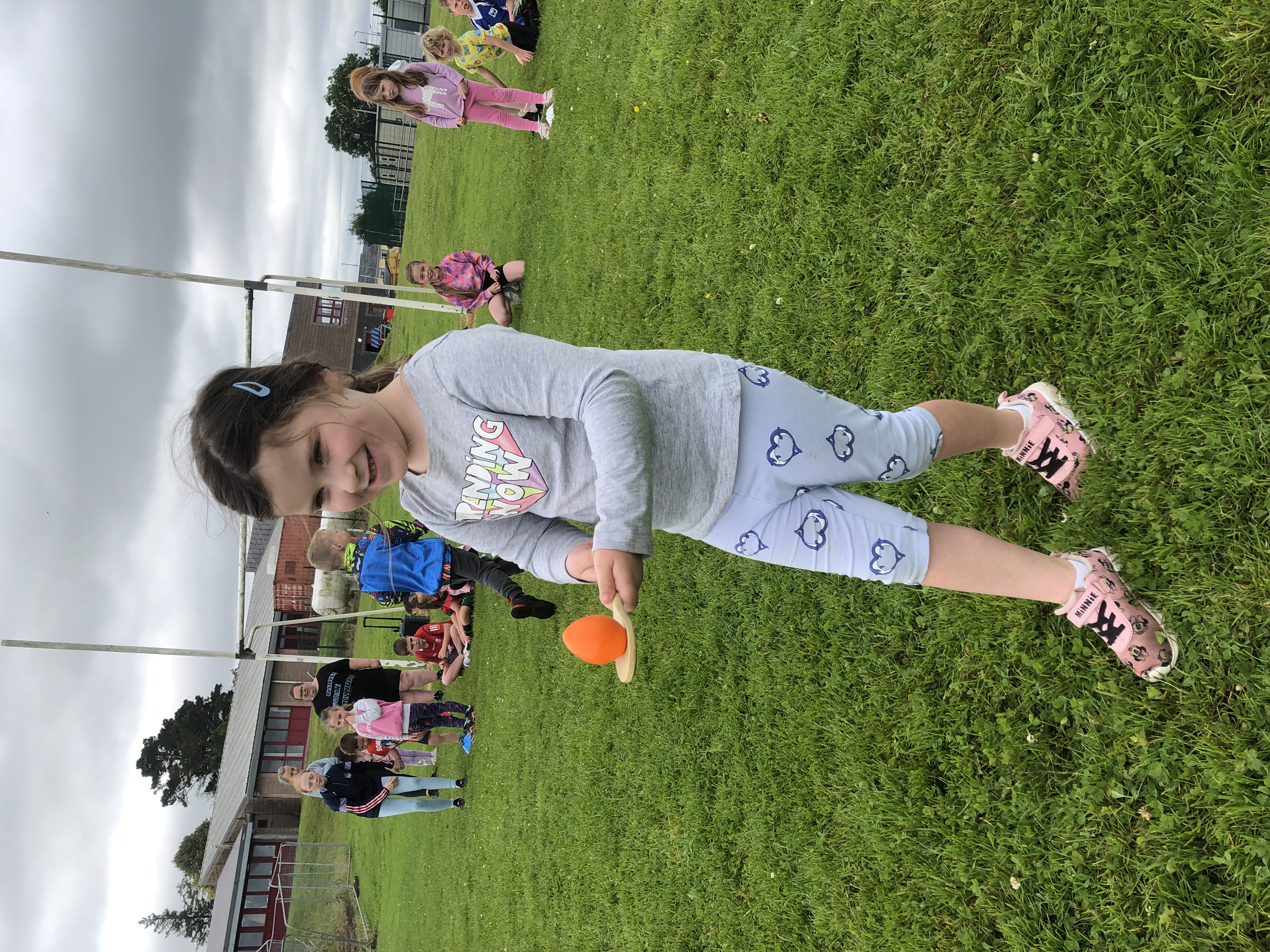
By focusing on the development of fundamental movement skills, parents and educators can help children build a strong foundation for physical activity, ensuring they lead healthier, more active lives.
Physical activity is defined as any bodily movement that occurs due to the contraction of skeletal muscle, resulting in energy expenditure (CDC. 2019). Regular physical activity is extremely beneficial for both physical and mental wellbeing. It helps to reduce the likelihood of, and manage noncommunicable diseases such as heart disease, diabetes and some forms of cancer; reduces symptoms of depression, anxiety and stress; and enhances cognitive abilities (WHO, 2020).
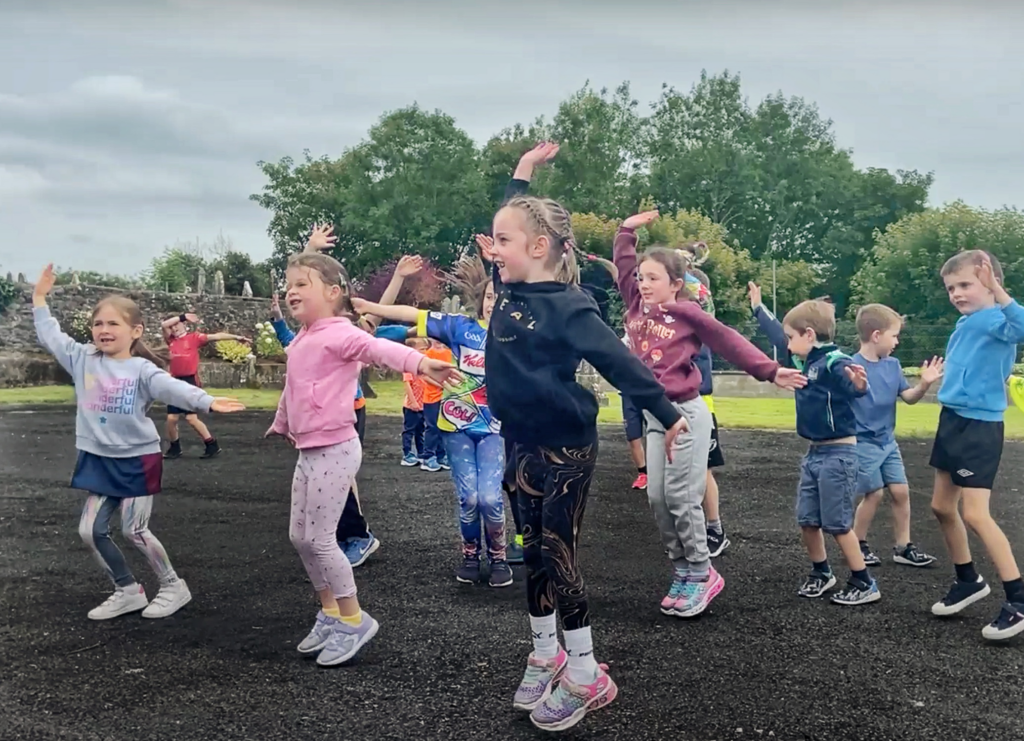
In order to ensure that people are physically active enough to avail of the benefits mentioned above, the World Health Organisation has developed recommended guidelines to follow. The Irish Department of Health also follows these same guidelines.
So what are the current recommended physical activity guidelines for children and teenagers? These differ depending on the child’s age. The World Health Organisation recommends the following:
| Age | Recommendations |
| Infants (less than 1 year) | - Be physically active several times throughout the day with floor-based play/ tummy time - Not be restrained (pram, high chair, baby carrier) for more than 1 hour at a time - Try to keep them engaged during sedentary time with reading/ storytelling |
| 1-2 year olds | - Spend 180 minutes being physically active at any intensity (spread throughout the day) - Not be restrained (pram, high chair, baby carrier) for more than 1 hour at a time - Try to keep them engaged during sedentary time with reading/ storytelling |
| 3-4 year olds | - Spend 180 minutes being physically active at any intensity, of which 60 minutes is at moderate to vigorous intensity (spread throughout the day) - Not be restrained (pram) or sitting for more than 1 hour at a time - Keep screen time to less than 1 hour, try keep them engaged during sedentary time with reading/ storytelling |
| 5-17 year olds | - Spend 60 minutes a day doing moderate to vigorous activity everyday. - Incorporate activities that will help with bone and muscle strengthening and development 3 days a week - Incorporate activities to improve flexibility - Limit sedentary time as much as possible |
From the above recommendations you can see, we are advised to be active at every point in our lives!
Despite clear evidence showing the benefits of physical activity, only 15% of children in Ireland are meeting the recommended physical activity guidelines of 60 minutes moderate to vigorous aerobic activity a day. These are the findings of the Children’s Sport Participation and Physical Activity study published in 2022. While this report did show a 2% increase in physical activity levels in children compared to data collected 5 years previous, a lot of work still needs to be done to improve this number in upcoming years.
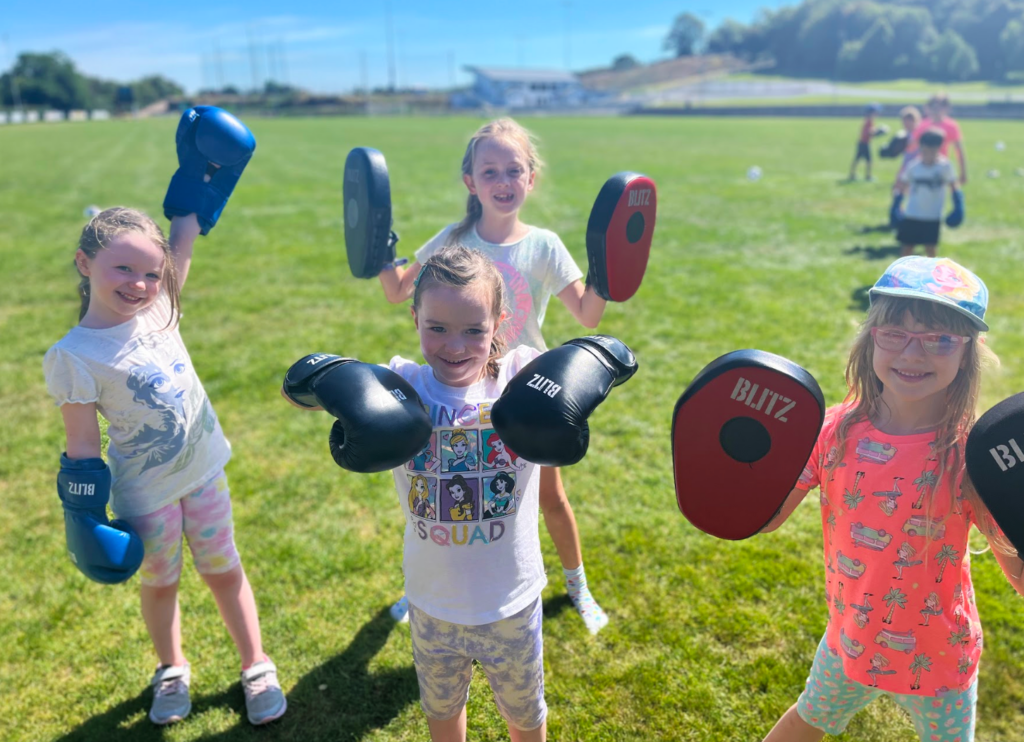
It’s important to ensure that our children and young people are as active as possible in early life, as physical activity levels during childhood are the best predictor of physical activity levels during adulthood (Telama et al., 2005).
So how can we ensure that children and young people are consistently meeting these recommended guidelines for physical activity? While the recommendations might seem quite daunting or unrealistic at first, they can be tailored to the individual’s lifestyle quite easily. While it’s recommended that children complete 60 minutes of moderate to vigorous aerobic activity a day, this just needs to be the accumulated amount, meaning it can be broken up throughout the day. For example, it might be a 10 minute walk to and from school. After school, you might bring your child to the playground or for a cycle around the park for 20 minutes. When you get home , you and your child might try out some fun dancing or active play together for 15 minutes. Then to finish off the day, you might incorporate some active breaks into their screen time e.g. during each ad break, they have to perform 10 jumping jacks. All of this gets you up to 60 minutes quite easily!
Notice how this example doesn’t include any after school activities such as football training or swimming lessons and it also doesn’t take physical activity during yard time into consideration, so there is no need to be intimidated by the 60 minute recommendation! Check out our suggestions of hitting your 60 minutes below.
Below, you will find a table that you can fill out to help ensure your child is hitting their 60 minutes of moderate to vigorous physical activity everyday! Fill in the activities you know they will definitely be doing throughout the week (walking to school, football training etc.) and the amount of time they will spend at them. This way you can easily see how much more time needs to be spent being active. You can see our example below and you can also print off your own version to fill out. You could even try to have your children design and decorate their own table to try encourage and motivate them to take accountability.
